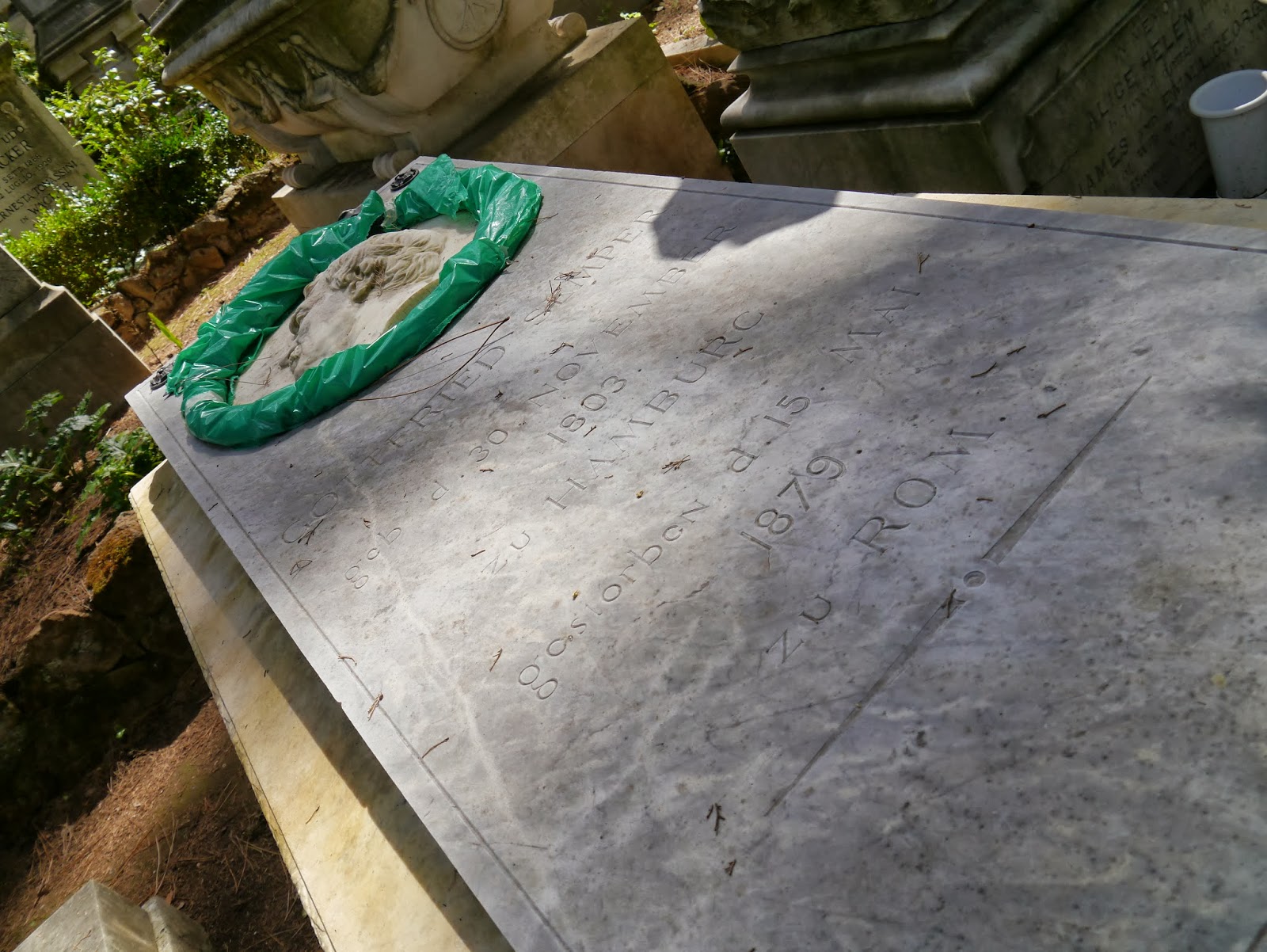 |
| '...and she never caused pain but by her death.' |
"It might make one in love with death, to be buried in so sweet a place." - Shelley
When the cemetery for non-Catholics was first established, on the outskirts of Rome near St Paul's Gate in the Aurelian Walls, the Pope had final say over who could be buried there and what the tombstones could look like. For a while, crosses were not permitted, and no inscriptions that might imply that the deceased could have made it into heaven -after all, anyone outside the Church could not expect that. However, since about the mid-19th century, things have been a bit less strict.
 |
| The Cestius Pyramid. |
 |
| "A Young English Poet" |
 |
| Joseph Severn |
In The Protestant Cemetery, near Keats' resting place, a plaque takes issue with his wish to be remembered as one whose name was "writ in water"...
The Cemetery is full of intriguing monuments - some tasteful and discreet, covered in delicate ivy; others floridly Victorian. Some are modern, since the Cemetery remains a working cemetery where people - non-Catholics, of course - are laid to rest. (In fact, the guide books tells me that there are some Catholics Italians resting here too, perhaps choosing to be beside family or friends. Antonio Gramsci, who was laid here in 1937, was one of the founders of Italian Communism).
As I strolled the delightful gardens of the Cemetery - maintained by volunteers, ex-pats in Rome (there's a "Friends" organisation) - I noticed quite a number of cats doing the same thing. They all looked well-fed - then I found this sign which explained that "The Cats of the Pyramid" have a "Friends" organisation too.
This particular monument has become something of a symbol of the Cemetery. The weeping angel, known as "The Angel of Grief", was sculpted by the American sculptor and poet WW Story, to commemorate his wife. He's now buried with her, under the Angel. A replica of this monument was erected at Stanford University in California to the memory of victims of the 1906 earthquake.
And here lies another English poet - Percy Bysshe Shelley, who chose words from Shakespeare's "The Tempest" for his resting place: 'Nothing of him that doth fade / But doth suffer a sea-change / Into something rich and strange.'
The great German poet Goethe visited the Cemetery during his stay in Rome in 1786, and apparently toyed with the idea of being buried there. His son August now is, his gravestone decorated with a medallion portrait by the sculptor Thorvaldsen.
 |
| The grave of the German architect Semper (responsible for the Opera House in Dresden, known as the Semperoper). (Under restoration). |
The Protestant Cemetery in Rome is the resting place of many nationalities - mostly English and German, but also many others, including Swedish. There are several mass graves - the Swedish one simply says "Here lie Swedes". It is also the resting place of many writers, musicians and artists.
Axel Munthe (who you may recall from this post) wrote a florid description of the Cemetery (there isa commemorative plaque to Munthe), and I'll leave you with his coda:
"The twilight of dreams falls over Rome, and the afterglow of antiquity lights up the solemn ruins. Like the bas-reliefs of an old sarcophagus, the summer of Italy enshrines the strangers' rest." - Munthe
















No comments:
Post a Comment